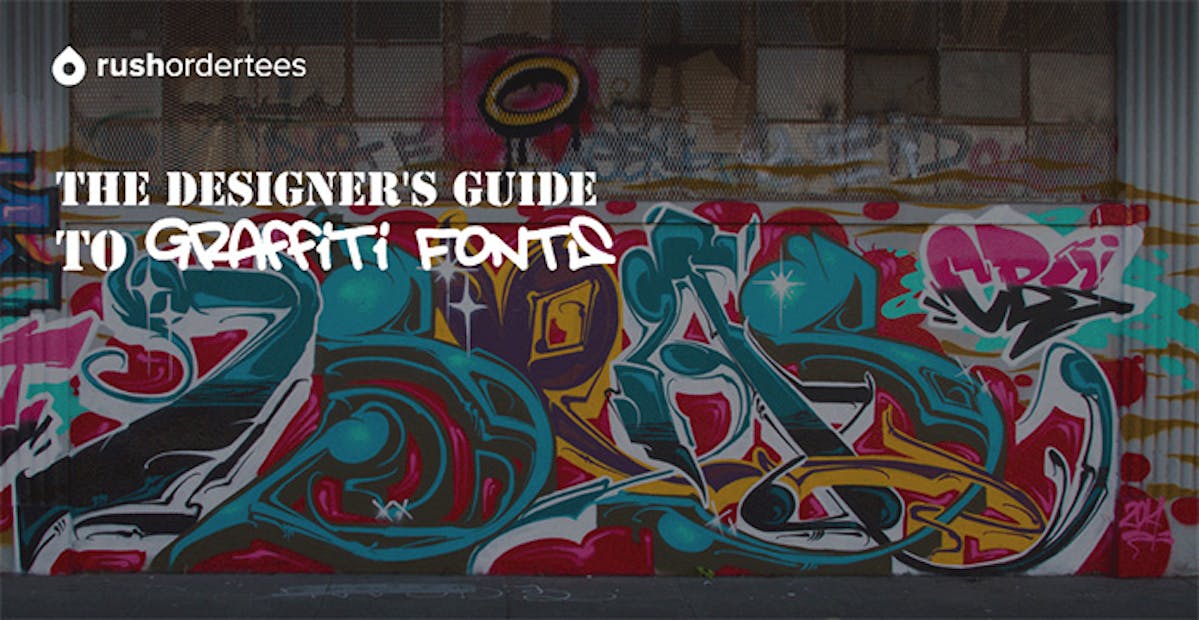

In many ways, graffiti is humankind’s earliest attempt to leave its mark on the world. By some accounts, we’ve been doing it for nearly 40,000 years. From the charcoal briquettes and crude tools of the prehistoric peoples of North America, ancient Egyptians, and the earliest manmade art in the caves of Indonesia, it has been a long road to the Sharpie markers and Krylon cans of modern man. But the intent of graffiti has never changed: “I exist! Look at me!”
The Greek word, graphein, means to write. But our modern use of the root in “graffiti,” has a much greater context.
The clandestine, illegal, and sometimes gang-related origins of modern graffiti and street art make it taboo to much of the art world, but in recent decades, the form has transcended the realm of crime into city-funded beautification programs, marketing campaigns, and is now recognized as a bonafide art form.
What could be better for your design than the artform that developed out of man’s need to leave his mark, capture attention, and depict a message? Here’s our guide to graffiti fonts that you can use in your own designs:
Just another font?
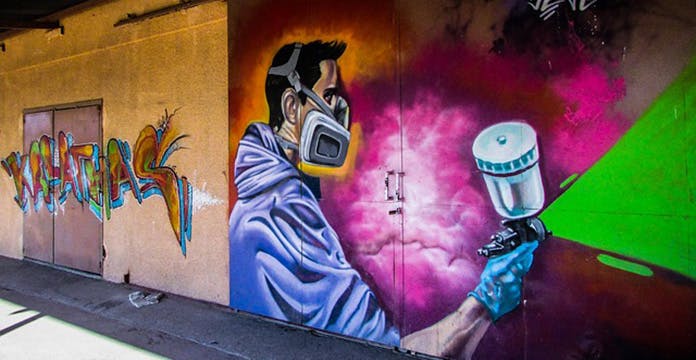
Many online articles and books on the subject trace the origins of modern American graffiti writing back to the 1960s—some even to the streets of Philadelphia (the home of Rush Order Tees). Most graffiti letterings take the ornate, but slightly stuffy style of calligraphy, and humanizes, animates, and exaggerates it into a voluminous, pulsing writing that borders on iconography.
Tagging, bombing, or whatever it is you call graffiti writing, is attention-grabbing. From brick walls to train cars, the beating life behind graffiti writing captures more attention than Times New Roman and Calibri. The canvases of graffiti artists are often larger than the front of a t-shirt, but the dynamic lettering is still effective when scaled down.
Options
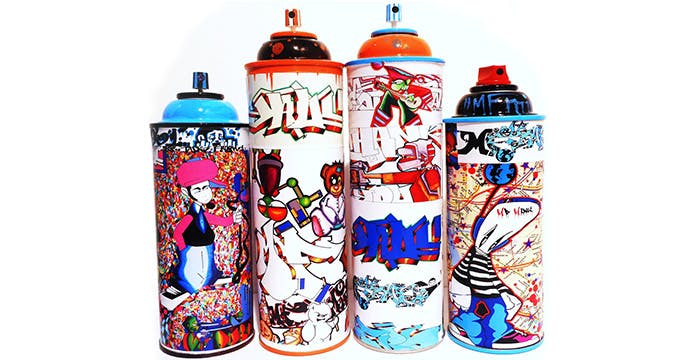
As long as you promise to keep it legal, Rush Order Tees has compiled some examples and descriptions for some of the coolest, most dynamic graffiti styles available. As styles change from artist to artist, we are featuring a few of the basic stylistic forms inherent in all graffiti writing.
Tag Inspired
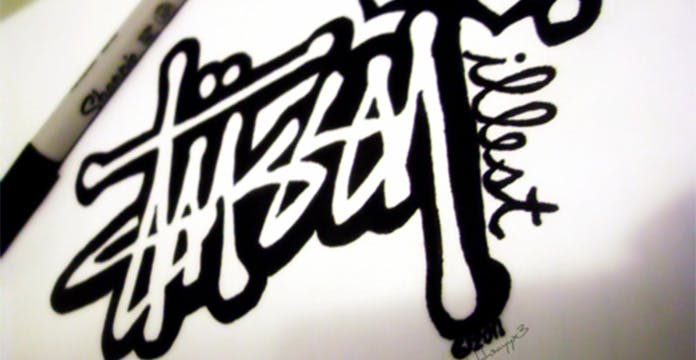
The tag style is Graffiti 101—consider it like learning how to write your name. That is its origin. Tagging is a quick and basic stylized form, but it’s not just a novice’s attempt at vandalizing a high school bathroom stall. Although the tag style is composed of letters, it becomes an icon for the artist—a calling card, a signature, a brand.
Tag-inspired text can go a long way. Renowned streetwear brand Stussy‘s logo is actually the signature of the brand’s founder, Shawn Stussy. Stussy and his assistant Christian Anicete began selling custom-designed surfboards in the early 80s, each of which Stussy signed with a wide-tipped marker. He soon began putting this logo onto t-shirts, hats, and other apparel and selling it out of his car. So began the brand and recognizable logo that exist today.
Throw-ups
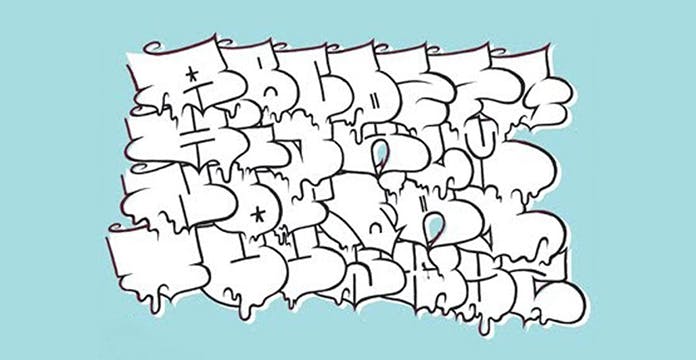
No, it’s probably not what you think from the subheading. We’re talking about another general style that is a bit more ornate than a tag. Bombs are basically like tags, with the sides blown out. They utilize bubble letters, and include two or three colors for outline, fill color, and shadowing.
Many effects are added to basic tags and throw ups to give them more magnitude and animation. Here are some of the basics:
Drips: These mimic the heavy spray of a can. They add movement and gravity to the piece.
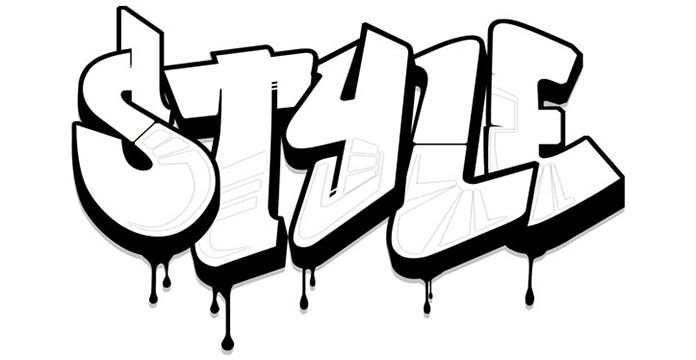
Shadow Letters: These give depth and perspective to either bubble or block letters. The use of shadow letters takes the one-dimensional surface, and pushes the piece out toward the viewer.

Fat Cap: Just as they sound—writing from a fatter (wider) orifice on the actuator (basically, paint comes out of the can through a bigger hole). It can soften tags and sharp edges.

The only risk as we get more stylized in our graffiti writing is that the images become a bit more abstract. Check out 1001 Fonts for a more simplified version of a basic throw-up font. Now, let’s enter the big leagues in terms of abstracting your graffiti writing.
Wildstyle
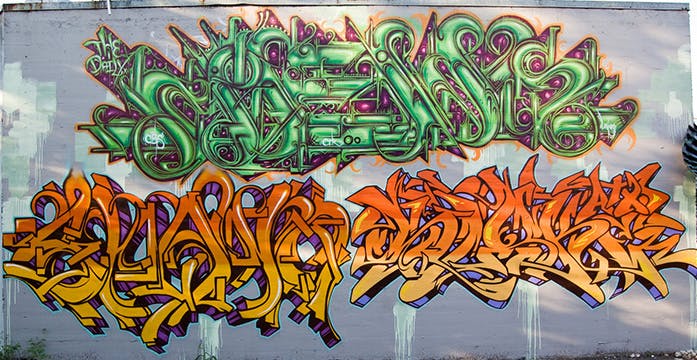
If you consider tagging as a bachelor’s degree and throw-ups as a master’s, then wildstyle is the PhD. Wildstyle occurs when an artist pursues aesthetics into the hazy world of abstraction. How do you get to wild style? Through something called letter progression.
Here’s a basic example of how the letter “R” can come out in wildstyle:
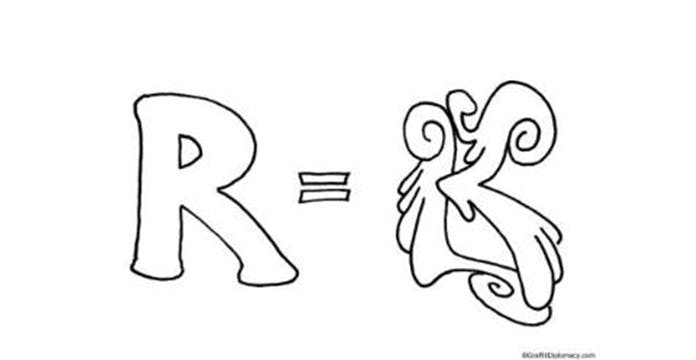
When you really break it down, it is not all that different from the initial (also called a drop cap) in classical and medieval prints.
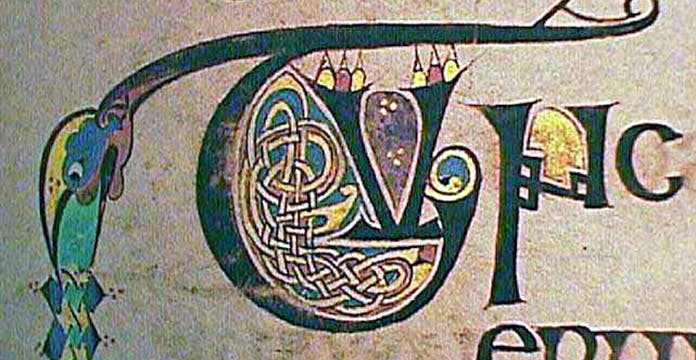
Like we said in the introduction, every artist is different, but you have to start somewhere. Getting wildstyle down is up to the individual, but in terms of a font, wildstyle is more aptly suited for a brand logo, as the message is often so distorted, legibility is secondhand to aesthetics. You can check out a great tutorial on letter progression into wildstyle here.
Graffiti writing will give your design exaggeration, playfulness, and a dynamism that isn’t inherent in other fonts. The bottom line is that it was developed to capture attention and make claims. Isn’t that what you want your brand and design to do? For more information on graffiti fonts, Creative Bloq offers a look at 54 of the best free graffiti fonts available. With a little practice, you’ll incorporate graffiti into your designs like a pro in no time.
Ryan R. Latini is a freelance writer working in the Greater Philadelphia Area. Follow him on Twitter @RyanRLatini.
RushOrderTees.com
About the Author
RushOrderTees is a nationwide leader in custom apparel. Our screen printing, digital printing, and embroidery services create t-shirts, hoodies, hats and related apparel for individuals as well as group. Our staff regularly contributes knowledge and expertise to our blog to help those interested in creating custom apparel.
